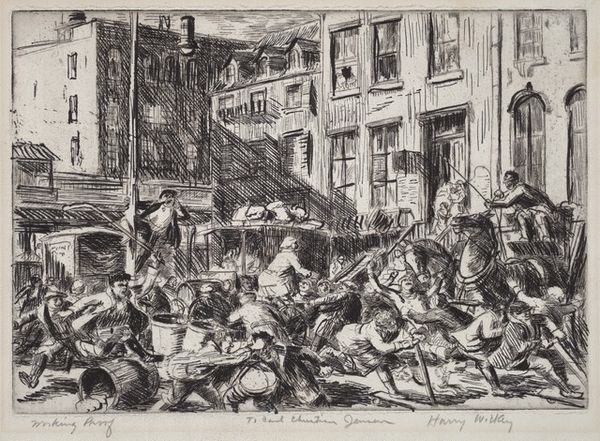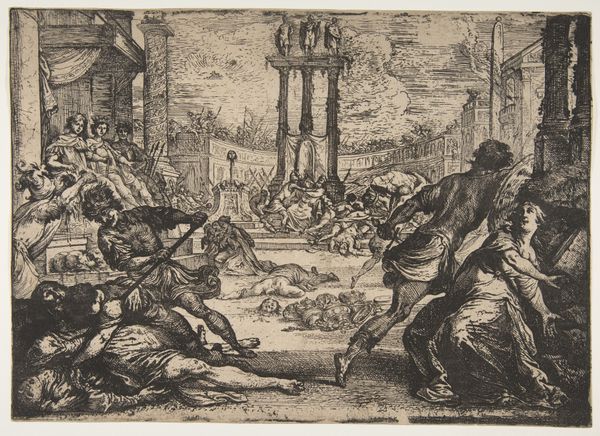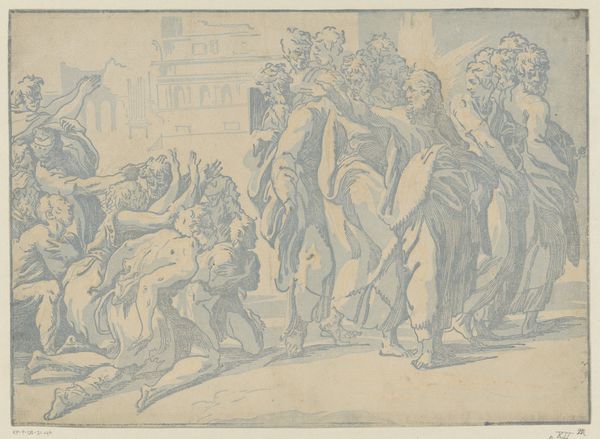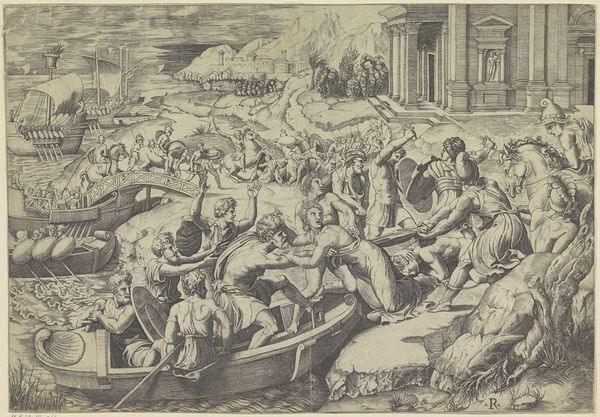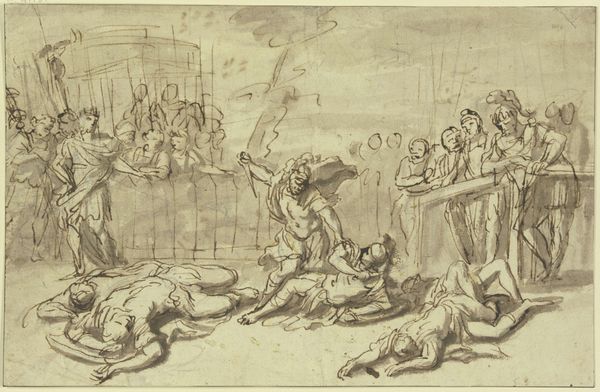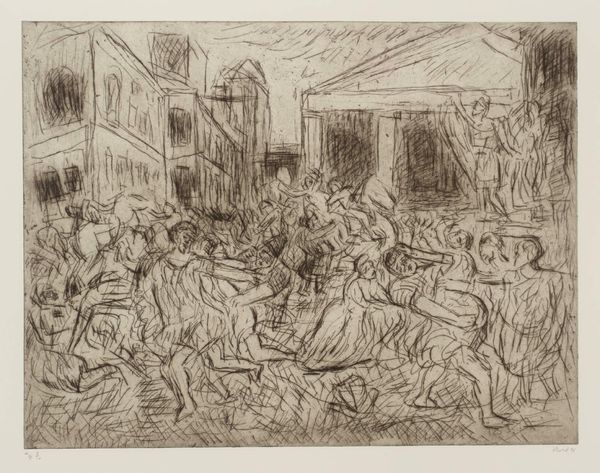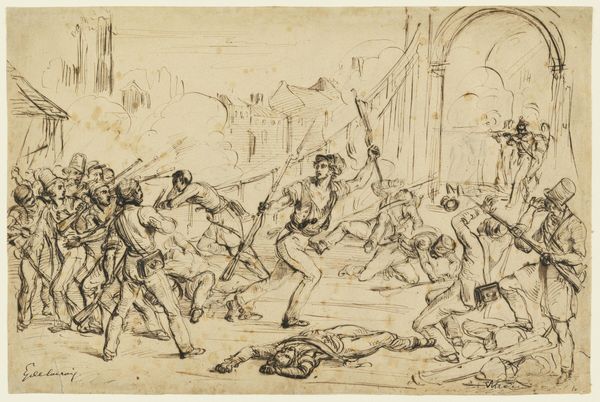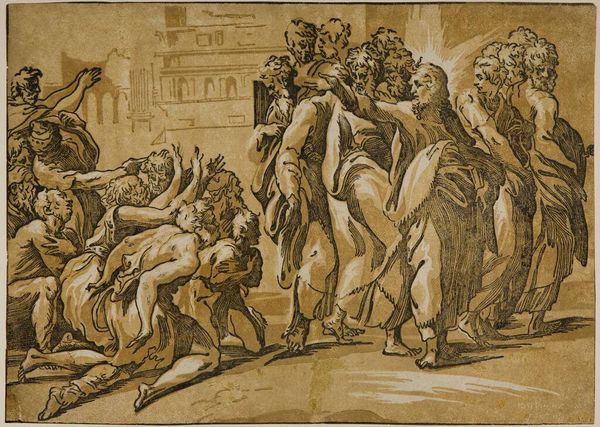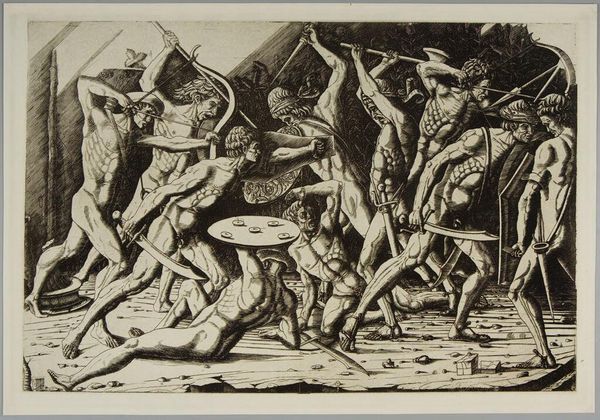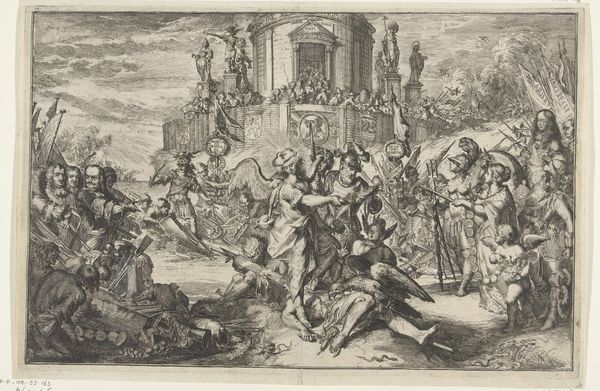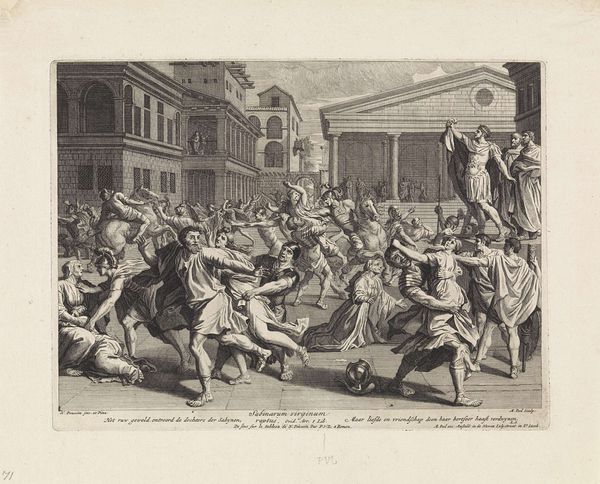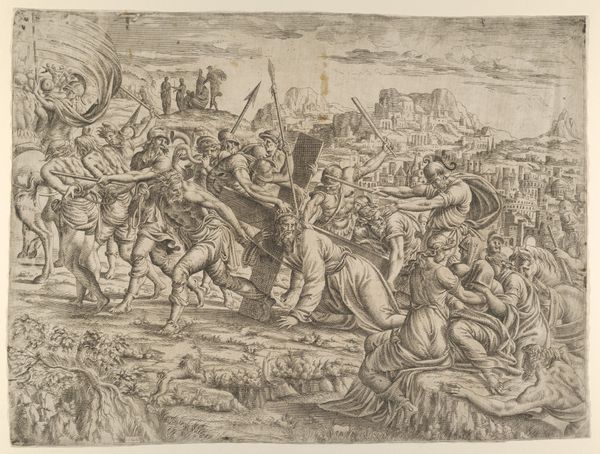
print, etching
#
ink drawing
#
narrative-art
# print
#
etching
#
social-realism
#
ashcan-school
#
cityscape
#
modernism
#
realism
Dimensions: image: 203 x 298 mm sheet: 235 x 330 mm
Copyright: National Gallery of Art: CC0 1.0
Curator: What a dynamic scene! It's teeming with life, though chaotic – figures tumbling, shouting, it all feels very…dense. Editor: This is Harry Wickey’s 1926 etching, "The Jungle." An example of Social Realism and, more broadly, his engagement with the Ashcan School movement. We can consider it an important historical document of urban life. Curator: Right, the title itself seems loaded. “The Jungle.” Is this Wickey explicitly commenting on the brutal, animalistic nature of city life? The way the image emphasizes laboring bodies, rough clothes, the everyday materials – those scattered bins... Is this intended to make a statement about class conflict, or the working class as victimized in this new landscape of skyscrapers? Editor: Exactly. And it speaks to the tradition of artists acting as social commentators during periods of great industrial and social change. This piece showcases how etching allowed Wickey to reproduce and disseminate these commentaries. Think about the social impact of circulating such images among the working class themselves. Curator: The act of distributing affordable prints amplifies his voice. And I’m fascinated by his method—etching involves considerable physical labor, coating the plate, drawing, acid etching—all before a single print is pulled. How does the materiality inform its message? Did he choose the etching technique to emphasize the artist’s labor and connect with the people displayed here? Editor: The choice of printmaking – specifically etching with its linear quality - speaks volumes. Wickey has created something raw, honest. Also, let's note how these prints end up being distributed—were they mostly for galleries, or private collections, or did the political nature ensure a more subversive public engagement? Curator: It invites the audience to be a witness to a gritty truth about this particular time in American life. A far cry from idealized portraits and pastoral landscapes. The city presented as both promise and a precarious trap. Editor: So when viewing “The Jungle,” we are viewing a social critique frozen in ink, an easily reproducible form with inherent political weight and historical awareness. Curator: Precisely. Considering all its contextual and material implications has offered us another perspective on this powerful snapshot of life!
Comments
No comments
Be the first to comment and join the conversation on the ultimate creative platform.
